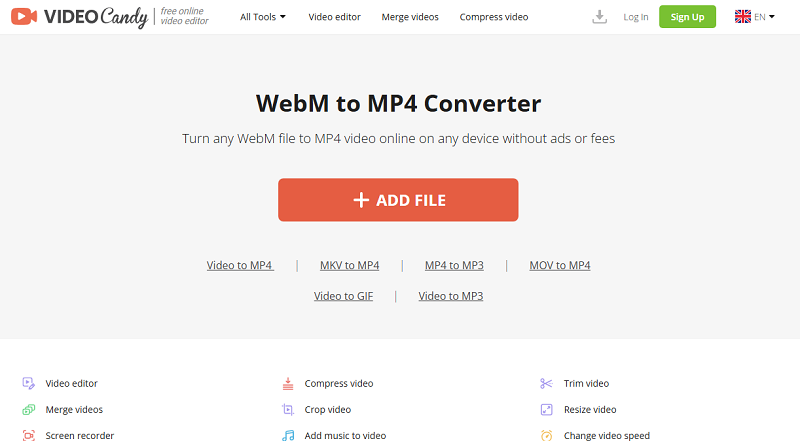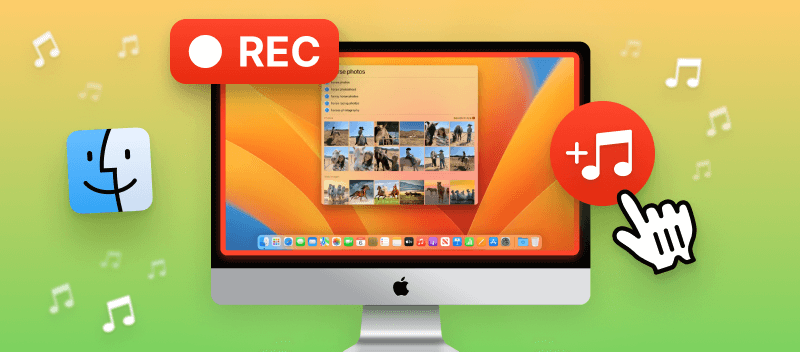Are you trying to decide between WebM vs MP4 formats for your multimedia files? Well, you've come to the right place!
In this article, we'll explore the key differences between the two formats. This will help you understand how each of these extensions can be used and how they differ in quality, compatibility, and compression.
By understanding the advantages and disadvantages of each format, you'll be able to make an informed decision about what one is best suited for you. So let's get started!
WebM vs MP4: What is a WebM?
WebM is a royalty-free multimedia container format developed by the Alliance for Open Media to create, store, and play high-quality video.
The file type was designed to be an open, modern alternative to more traditional formats, such as MP4 and AVI. WebM files offer better performance and size efficiency than other formats without sacrificing visual quality.
The development of the extension began in 2010 when Google launched the VP8 video codec and accompanying WebM container format. Since its creation, the format has been widely adopted by browsers, media players, hardware devices, web services, and many more. That's because it's an optimal solution for streaming high-quality video content online quickly and effortlessly.
Container benefits:
- WebM videos are small in size and can be easily shared across the Internet, making them perfect for streaming video.
- It creates smaller videos with higher quality than other formats, so audiences enjoy clips with less concern about download speed.
- Because of its open-source nature, WebM has wide platform support, allowing videos to be viewed on web browsers, mobile devices, and even console gaming platforms.
Advantages of WebM Format
- Easy to Use: WebM is simple to create, store, and play, which makes it the perfect choice for streaming and sharing content.
- Compatible with Versatile Devices: WebM can be viewed across a variety of platforms, counting browsers, gaming systems, and mobile phones.
- Low Processing Power: WebM requires little processor performance from viewers' devices, making videos easy to watch without lag or stuttering.
- Compressible: WebM files are highly compressible, meaning they can be transferred easily and quickly over slower internet connections without compromising quality. Check out how to compress a video for email, too.
MP4 vs WebM: What's MP4?
MP4, or MPEG-4 Part 14, is a digital multimedia container file format. Developed by the Motion Pictures Expert Group (MPEG) in 2001, MP4 is used to store and stream audio and video files over the Internet. It can also be used to store images and other data.
What makes MP4 file special is its ability to compress files without sacrificing sound or visual quality. Additionally, it accepts different codecs and can support up to 8 audio channels at once. The organization or bandwidth optimization traits of the format make it ideal for streaming videos and music online.
MP4 is currently the mainstream standard for video content. This is especially true with the growth of mobile devices in recent years. As such, you’ll find that many websites, apps, devices, and software are built around MP4. This makes it a great choice if you’re looking to watch or share online media.
Advantages of the MP4 Format
- File compression without loss of audio and/or video quality.
- Provide 8-channel audio support.
- Ideal for online video and music streaming.
- Facilitate viewing or sharing online media.
- High compatibility with most websites, applications, devices, and programs.
WebM vs MP4: Comparison Table
When sharing or hosting videos, two of the most commonly used formats are WebM and MP4. The main difference between them is the size of the videos they produce and the file type.
| Specification | WebM | MP4 |
|---|---|---|
| Video Codecs | VP8, VP9, AV1. | H.264, H.265 (HEVC), MPEG-4 Part 2. |
| Container Format | Matroska (based on MKV). | MPEG-4 Part 14. |
| Developer | Google. | Moving Picture Experts Group. |
| File Size | Generally smaller, especially with VP9/AV1. | Typically larger, but can vary based on codec and quality. |
| Compression Efficiency | High (VP9/AV1). | Moderate to high (H.264 is highly efficient). |
| Playback | Modern web browsers (Chrome, Firefox, Opera), limited native support on mobile devices and older systems. | Broad support. |
| Streaming | HTML5 environments. | Widely supported, including in HTML5, adaptive streaming (DASH, HLS). |
| Editing Compatibility | Limited, requires specific tools. | Wide compatibility with most editing software. |
| DRM Support | Limited, less common. | Extensive support through MPEG standards (e.g., FairPlay, Widevine). |
| Use Cases | Web video streaming, open-source projects, YouTube. | General video distribution, DVDs, Blu-ray, most digital media. |
| Open Source | Fully open and royalty-free. | H.264/H.265 requires licensing. |
| Scalability | Highly scalable, especially with newer codecs (AV1). | Older codecs (like H.264) may struggle with newer resolutions like 8K. |
| Transparency | Limited (requires workarounds). | Supported (especially with certain profiles in H.264/H.265). |
| Subtitles/Closed Captions | Supports WebVTT. | Supports multiple subtitle formats, including SRT, VTT. |
If you need to stream live videos over the internet with limited bandwidth, WebM is typically your best option for satisfactory results. For high-quality recordings that can be watched offline, go for the MP4 format.
WebM vs MP4 - Audio
| Consideration | WebM | MP4 |
|---|---|---|
| Supported Codecs | Vorbis, Opus | AAC, MP3, ALAC, AC-3 |
| Quality | High, especially with Opus | High, especially with AAC |
| Multiple Tracks | Limited | Supports up to 8 audio channels |
| Surround Sound | Yes (limited with Vorbis) | Yes (AAC) |
| Efficiency | Good (Opus offers excellent quality at low bitrates) | Excellent (AAC provides efficient compression) |
| Compatibility | Mostly web-based, limited hardware support | Broad across devices and software |
| Latency | Low, especially with Opus codec | Typically higher with AAC compared to Opus |
MP4 vs WebM - Compatibility
When it comes to viewing videos online, the choice between WebM and MP4 files can be confusing. WebM is an open-source file format designed for use with HTML5 video on the web. Whereas MP4 is a digital multimedia format used for storing audio and video, as well as other data like subtitles.
In terms of compatibility, WebM is more widely supported than MP4. It works in all modern web browsers, including Google Chrome, Firefox, Edge, and Opera. In contrast, MP4 offers more compatibility with non-web platforms and systems, like Apple TV, PlayStation, and Xbox.
It ultimately comes down to one's individual needs when deciding among WebM and MP4. If you want maximum compatibility across all platforms, then WebM is the way to go. Otherwise, if you need wider compatibility with hardware devices then going with MP4 is the best option.
How to convert WebM to MP4?
Are you trying to convert WebM files to MP4, a more versatile and supportable format? Look no further – with Video Candy, you can do just that!
Using this online tool to convert WebM videos to MP4 has many advantages. Unlike using desktop software, it's quick and easy – you don't have to install any additional programs or commit any extra storage space. Additionally, all of your files are securely stored during the conversion process for your peace of mind.
Here's how to use an online video converter to get your WebM files converted to MP4. The process is incredibly simple:
- Open the WebM to MP4 converter in your browser.
- Upload the file you want to be turned
- The conversion process will start automatically.
- Download and save your newly transformed file.

Why You May Need to Convert WebM to MP4?
More and more people are using WebM files – but not everyone can access them. That’s why it is important to convert WebM files to MP4.
- WebM video files unfortunately have limited browser and device compatibility; meaning that many users won’t be able to play it back without converting to a different format.
- MP4 is the most widely-used format with wide support across numerous devices, browsers, and streaming platforms. It has a great balance of high-quality playback and small file size; plus, there are different bitrate and resolution settings available. This means you can produce great-looking videos while also keeping file sizes manageable.
Ultimately, if you want to ensure that your videos reach as many viewers as possible, the best way to do that is by converting them from WebM to MP4.
WebM vs MP4 - FAQs
1. Q: Does WebM support hardware acceleration?
A: Yes. WebM files can be accelerated by most modern GPUs (graphics processing units) which helps speed up playback performance. Alternatively, MP4 is not hardware accelerated in most cases. It will rely heavily on the CPU for CPU-hungry operations (setting up frames per second or image resolution when playing videos).
2. Q: What platforms support the two formats?
A: The primary platform that supports both WebM and MP4 is a web browser. Google Chrome and Mozilla Firefox, among other web browsers, have implemented full compatibility for both formats. Additionally, most popular players like Windows Media Player and VLC have also implemented full support for these formats.
3. Q: Can I convert WebM and MP4 files to another format?
A: Yes. WebM and MP4 video files can be easily converted to other formats such as AVI, MOV, or FLV using video conversion services and programs.
4. Q: Is one format better than the other?
A: It really depends on the use case. WebM offers better performance with hardware acceleration but it is limited in audio options. MP4 offers more audio codecs and is widely supported but lacks hardware acceleration support.
5. Q: Is WebM compatible with all web browsers?
A: No, not all browsers support the WebM format. However, popular browsers such as Chrome, Firefox, Edge and Opera have adopted complete support for the format.
6. Q: Are there any disadvantages when using either format?
A: Yes, both formats have their drawbacks. WebM requires hardware acceleration for optimal playback performance. So any device without hardware acceleration will struggle to play WebM files smoothly. On the other hand, MP4 does not support hardware acceleration which can result in CPU-intensive playback on some computers or devices.
7. Q: Does one format have any advantages over the other when it comes to streaming online video?
A: Yes. The WebM format typically gives a lower latency response time compared to MP4 due to its more efficient compression technique. This makes it ideal for broadcasting applications such as video conferencing or streaming services like YouTube.
WebM vs MP4 - Conclusion
In conclusion, both the MP4 and WebM formats have their unique strengths and weaknesses.
- MP4 offers better compatibility with online services. It is a better choice for videos intended for downloading or streaming, as smaller file sizes can be achieved.
- WebM, on the other hand, is an open-source format with impressive video quality that offers better usability on the web.
When selecting a video format, the most important points to consider are its availability and compatibility, the quality of the clip, and the final size. Educate yourself about the options available and determine the best option to suit the specific needs of your project.
Read other articles about popular video formats
- Check out our comparison of MP4 vs MOV video formats to better understand the difference between all popular extensions.
- Find out everything you might need to know about an MKV video format - How to open and work with it.
- Get to know TikTok and learn all about video sizes for this social network.




